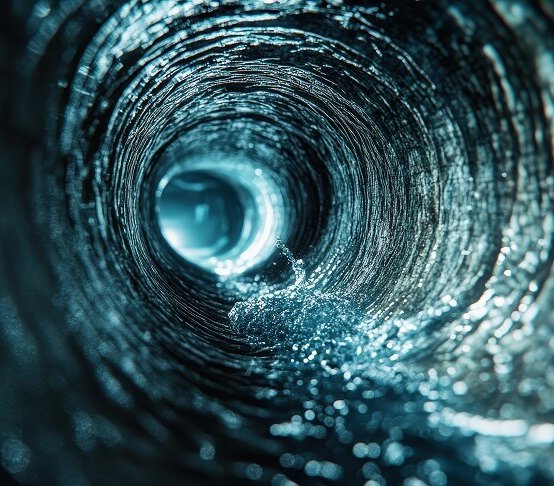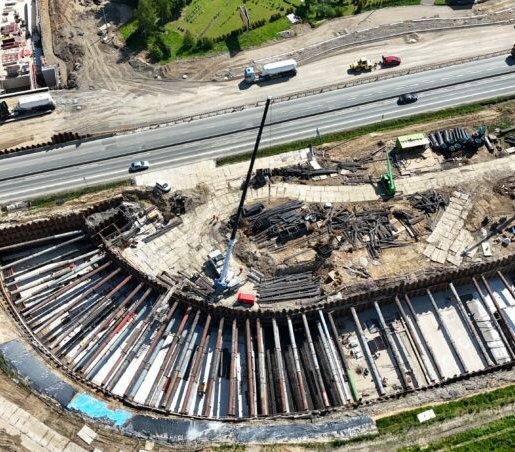A series of difficulties and problems were encountered by us during the execution of the contract \"Renovation of the existing sewage networks in the left riverbank of Szczecin\", and we have already written about some of these stories in the columns of this quarterly in preceding articles. The sewers were renovated by us using various technologies, including CIPP liners, discrete pipe liners, chemically resistant coatings, open pit pipe replacements, and pipe eating.
.jpg) Fig. 1. Latching device
Fig. 1. Latching device
.jpg) However, even such a broad spectrum of used renovation techniques turned out to be insufficient for the renovation of the sewer in Zapadła street, which is a large-size, bell-shaped, combined-flow sewer which collects sewage from an extensive part of the city. There is a lot of sewage flowing through the sewer, average flow is 4000 m3/h.
However, even such a broad spectrum of used renovation techniques turned out to be insufficient for the renovation of the sewer in Zapadła street, which is a large-size, bell-shaped, combined-flow sewer which collects sewage from an extensive part of the city. There is a lot of sewage flowing through the sewer, average flow is 4000 m3/h.Fig. 2. Latching device
.jpg) After cleaning and survey we found grave structural damage in place - cracks in the crown, cracks in sides and the bulging of the sewer in its bottom part. The technical condition of the sewer required structural reinforcement. Such a level of damage was caused by excessive loading of the sewer exerted by wheeled traffic, resulting from sewer's inadequacy for modern traffic loads, SLW 60 class. Negative impact of wheeled traffic was exacerbated by a very small ground cover depth, ranging from 0.5 m to 1.5 m.
After cleaning and survey we found grave structural damage in place - cracks in the crown, cracks in sides and the bulging of the sewer in its bottom part. The technical condition of the sewer required structural reinforcement. Such a level of damage was caused by excessive loading of the sewer exerted by wheeled traffic, resulting from sewer's inadequacy for modern traffic loads, SLW 60 class. Negative impact of wheeled traffic was exacerbated by a very small ground cover depth, ranging from 0.5 m to 1.5 m.
Fig. 3. Winding
.jpg) The damage resulted in significant deformation of sewer shape - its original dimensions were B/H = 2600 mm/1750 mm, but after many years of operation under highly excessive traffic loads the corresponding dimensions in critical locations were only 2265/1560 mm.
The damage resulted in significant deformation of sewer shape - its original dimensions were B/H = 2600 mm/1750 mm, but after many years of operation under highly excessive traffic loads the corresponding dimensions in critical locations were only 2265/1560 mm.
Fig. 4. Bracing system
During design works we have taken into consideration the trenchless renovation based on usage of segment pipes. The selected modules, having dimensions resulting from minimum dimensions of the sewer, reduced the hydraulic flow capacity by about 10%.
.jpg) The Employer however, taking into account the plans of urban building expansion over the catchment area of sewerage in Zapadła street, put a special emphasis on the selection of technologies which would improve the flow capacity of the sewer. This ruled out the use of GRP modules having the same cross-section along the whole length due to hydraulic reasons, and the usage of modules with varying cross-sections was ruled out by economic limitations. Looking for an optimal solution for the case of Zapadła street we have approached the CPT company which co-operates with its Japanese partner - Sekisui company, which in turn is in possession of a technology which fulfilled all our expectations.
The Employer however, taking into account the plans of urban building expansion over the catchment area of sewerage in Zapadła street, put a special emphasis on the selection of technologies which would improve the flow capacity of the sewer. This ruled out the use of GRP modules having the same cross-section along the whole length due to hydraulic reasons, and the usage of modules with varying cross-sections was ruled out by economic limitations. Looking for an optimal solution for the case of Zapadła street we have approached the CPT company which co-operates with its Japanese partner - Sekisui company, which in turn is in possession of a technology which fulfilled all our expectations.
Fig. 5. Grouting machine
The technology in question is a derivative of a system addressed by a standard PN-EN 13566-7 Lining of spirally wound pipes.
.jpg) The SPR technology consists in using a PVC profile - a strip reinforced by steel wires - which is spirally introduced to the existing pipeline. The consecutive coils are latched together, and the ring-shaped space being thus created between the wound profile and the original pipe is then grouted, forming a SPR pipe - a strong composite pipe integrated with the existing sewer.
The SPR technology consists in using a PVC profile - a strip reinforced by steel wires - which is spirally introduced to the existing pipeline. The consecutive coils are latched together, and the ring-shaped space being thus created between the wound profile and the original pipe is then grouted, forming a SPR pipe - a strong composite pipe integrated with the existing sewer.
Fig. 6. Feeding the PVC profi le
.jpg) The PVC profile forms an internal layer of a new conduit, and it comes into direct contact with sewage. This layer is watertight and has excellent resistance to abrasion. The PVC profile also constitutes a mould for the injected cement grout which then forms a main strength element of a composite pipe. A special grout is used, having high strength parameters whose exact value is selected depending on the technical condition of the sewer, the depth, cross-section, wheeled traffic load and the ground water level, and which are calculated using a finite elements method. For the purposes of sewer renovation in Zapadła street in Szczecin city we have used a cement grout whose compression strength exceeds 55 N/mm2.
The PVC profile forms an internal layer of a new conduit, and it comes into direct contact with sewage. This layer is watertight and has excellent resistance to abrasion. The PVC profile also constitutes a mould for the injected cement grout which then forms a main strength element of a composite pipe. A special grout is used, having high strength parameters whose exact value is selected depending on the technical condition of the sewer, the depth, cross-section, wheeled traffic load and the ground water level, and which are calculated using a finite elements method. For the purposes of sewer renovation in Zapadła street in Szczecin city we have used a cement grout whose compression strength exceeds 55 N/mm2.
Fig. 7. Sometimes hammer has to be used
.jpg) The thickness of grouting layer, adapted for all the existing loads and the selected optimal parameters, came out as ranging from 10 to 18 cm. Such properties of the grout allowed for maximising the dimensions of the new sewer, and thanks to a very low roughness coefficient value the flow capacity obtained after renovation shall surpass the one before renovation, even without any deformations and sediments. Moreover, thanks to PVC profile latching system we were able to use various cross-sections of a new conduit, following the original cross-sections as closely as possible. The time took for the renovation of a 170 m long section of the sewer is estimated to be about four weeks. The installation of SPR liner in Szczecin at Zapadła street is the first such an undertaking in Europe. INFRA workers are taking an active part in the installation works under a watchful eye of CPT specialists. SPR lining may be used for the renovation of large-size conduits of various shapes (circular, bell-shaped, rectangular) with a larger dimension reaching up to 5000 mm. It allows for covering pipe direction changes and bends, transverse shifts and changes of inclination.
The thickness of grouting layer, adapted for all the existing loads and the selected optimal parameters, came out as ranging from 10 to 18 cm. Such properties of the grout allowed for maximising the dimensions of the new sewer, and thanks to a very low roughness coefficient value the flow capacity obtained after renovation shall surpass the one before renovation, even without any deformations and sediments. Moreover, thanks to PVC profile latching system we were able to use various cross-sections of a new conduit, following the original cross-sections as closely as possible. The time took for the renovation of a 170 m long section of the sewer is estimated to be about four weeks. The installation of SPR liner in Szczecin at Zapadła street is the first such an undertaking in Europe. INFRA workers are taking an active part in the installation works under a watchful eye of CPT specialists. SPR lining may be used for the renovation of large-size conduits of various shapes (circular, bell-shaped, rectangular) with a larger dimension reaching up to 5000 mm. It allows for covering pipe direction changes and bends, transverse shifts and changes of inclination.
Fig. 9. Frame of a latching device
.jpg) The PVC profile is introduced to the sewer through a sewerage manhole. The machine used for latching the profiles, which is also a load-bearing frame for the latching device, is introduced to the sewer in parts and assembled there, which does away with a need for an installation trench. The installation can be conducted at a normal sewage flow, as long as the level allows for people moving in the sewer. The installation of SPR lining requires a vehicle-borne crane used for the unloading of spools with PVC profile coils, power supply, latching machine, grouting pump and the access to water from municipal supply system. The whole process requires some preparatory works, during which the places potentially inaccessible to grouting compound are sealed with quick-setting mortar. Then, the installation process of a spirally wound pipe starts to set it in the sewer. The latching device moves inside a sewer along a frame, which is gradually moved forward (pictures 1 and 2 - the latching machine, picture 3 - winding). The next length of profile from a next spool is connected by inserting the steel reinforcing wires into the end of previous profile length and fixing them together with adhesive tape.
The PVC profile is introduced to the sewer through a sewerage manhole. The machine used for latching the profiles, which is also a load-bearing frame for the latching device, is introduced to the sewer in parts and assembled there, which does away with a need for an installation trench. The installation can be conducted at a normal sewage flow, as long as the level allows for people moving in the sewer. The installation of SPR lining requires a vehicle-borne crane used for the unloading of spools with PVC profile coils, power supply, latching machine, grouting pump and the access to water from municipal supply system. The whole process requires some preparatory works, during which the places potentially inaccessible to grouting compound are sealed with quick-setting mortar. Then, the installation process of a spirally wound pipe starts to set it in the sewer. The latching device moves inside a sewer along a frame, which is gradually moved forward (pictures 1 and 2 - the latching machine, picture 3 - winding). The next length of profile from a next spool is connected by inserting the steel reinforcing wires into the end of previous profile length and fixing them together with adhesive tape. .jpg) The next phase of SPR lining installation is the assembly of a bracing system inside the already-wound PVC liner, whose purpose is to stabilise its proper shape during the grouting process (picture 4 - bracing system, picture 5 - grouting machine). After injection the grout sets and a composite pipe is formed. The last phase of the process is the removal of the bracing system and disassembly of the latching machine. The SPR technology is a very serious competitor for liners made of discrete pipes (segments) and chemically resistant coating liners. Its advantages over chemically resistant coatings are a very low roughness coefficient, a structural reinforcement of the sewer, and no bypassing needed (in case the sewage flow is within reasonable limits! ). The corresponding advantages over modules are: no need to dig installation trenches, the capability to use the liner on bends, minimal reduction of cross-section, and a relative ease of changing the cross-section mid way.
The next phase of SPR lining installation is the assembly of a bracing system inside the already-wound PVC liner, whose purpose is to stabilise its proper shape during the grouting process (picture 4 - bracing system, picture 5 - grouting machine). After injection the grout sets and a composite pipe is formed. The last phase of the process is the removal of the bracing system and disassembly of the latching machine. The SPR technology is a very serious competitor for liners made of discrete pipes (segments) and chemically resistant coating liners. Its advantages over chemically resistant coatings are a very low roughness coefficient, a structural reinforcement of the sewer, and no bypassing needed (in case the sewage flow is within reasonable limits! ). The corresponding advantages over modules are: no need to dig installation trenches, the capability to use the liner on bends, minimal reduction of cross-section, and a relative ease of changing the cross-section mid way.
Fig. 10. And sewage keeps fl owing
.jpg) Of course, all the trenchless technologies are very good renovation solutions, especially in congested cities where no option exists to access the piping systems through dug-up pits, but the selection of a particular trenchless technology must be preceded with the analysis of the condition of a sewer, the requirements of an Employer, localisation, and also economic considerations. In my opinion the pioneering installation in Szczecin may turn out to have been a break-through event for SPR technology in Europe. INFRA S.A. is already in the process of work aimed at using this technology for our next project which includes in its scope the renovation of a man-entry sewer (the design office is currently preparing appropriate documentation).
Of course, all the trenchless technologies are very good renovation solutions, especially in congested cities where no option exists to access the piping systems through dug-up pits, but the selection of a particular trenchless technology must be preceded with the analysis of the condition of a sewer, the requirements of an Employer, localisation, and also economic considerations. In my opinion the pioneering installation in Szczecin may turn out to have been a break-through event for SPR technology in Europe. INFRA S.A. is already in the process of work aimed at using this technology for our next project which includes in its scope the renovation of a man-entry sewer (the design office is currently preparing appropriate documentation).
Fig. 12. Infra workers at work
The fact that it is worthwhile to take risks inherent in the introduction of innovative solutions has found a way to the hearts of Employer's workers supervising our works in Szczecin, who watched with awe and some disbelief the first European installation of an SPR pipe in real-life conditions. Agnieszka Podhajska, INFRA S.A. Project Manager, Szczecin.

Foto, video, animacje 3D, VR
Twój partner w multimediach.
Sprawdź naszą ofertę!

Aby dodać komentarz musisz być zalogowany. Przejdź do formularza logowania/rejestracji.
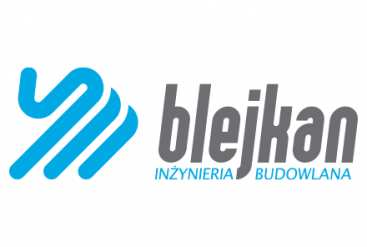
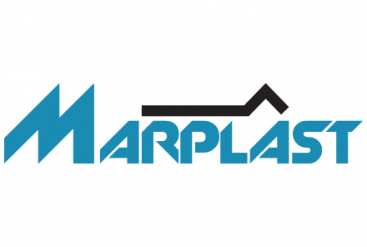
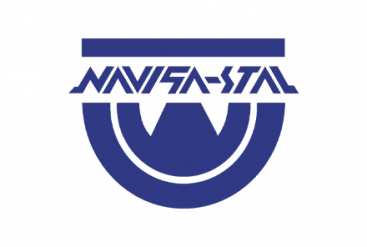






![Czasopismo Trenchless Engineering Special Edition [5]](https://inzynieria.com//uploaded/magazines/ib0s5cover_mid(0).jpg)
